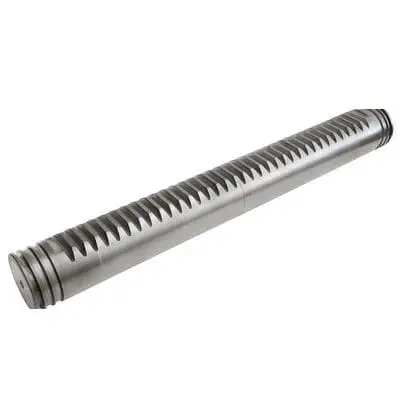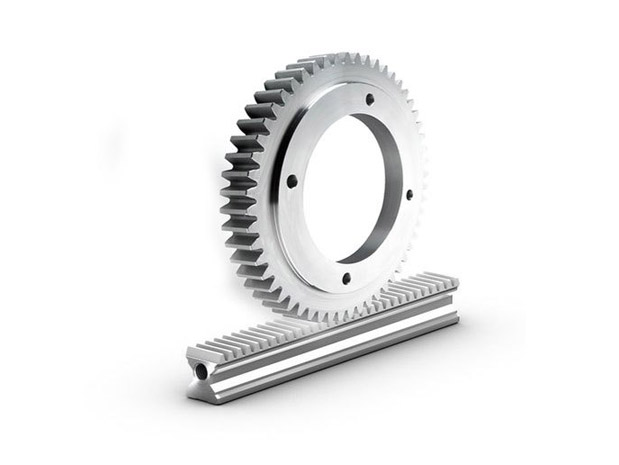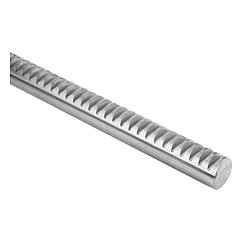Product Description
Rack Pinion Steering CHINAMFG Linear Round Flexible Industrial Durable China Manufacturer Stainless Steel Helical Spur Flexible Plastic Rack Pinion Steering
rack pinion
High precision helical rack for smooth, quiet operationPrecision pinions easily mount to GAM gearboxesPinion can be pre-mounted to the gearboxRacks and pinions are matched to GAM gearboxes for optimized system performanceGAM engineering expertise to select the best solution for your application
The GAM Helical Rack and Pinion series, along with our broad gearbox offering, provide a complete linear solution. Use our motion control engineering expertise to select the rack and pinion and match it with the right gearbox for your application.
Features
-
High precision helical rack for smooth, quiet operation
-
Precision pinions easily mount to GAM gearboxes
-
Pinion can be pre-mounted to the gearbox
-
Racks and pinions are matched to GAM gearboxes for optimized system performance
-
GAM engineering expertise to select the best solution for your application
| Type: | Gear Rack |
|---|---|
| Certification: | CE, ISO9001: 2000 |
| Condition: | New |
| Teeth Type: | Spur Teeth or Helical Teeth |
| Material: | Stainless Steel |
| Module: | 0.4-8 |
| Samples: |
US$ 9999/Piece
1 Piece(Min.Order) | |
|---|

What types of materials are commonly used for round gear rack components?
Various materials are commonly used for manufacturing round gear rack components. Here’s a detailed explanation of the commonly used materials:
- Steel: Steel is one of the most widely used materials for round gear rack components. It offers excellent strength, durability, and resistance to wear. Steel gear racks are capable of handling high loads and provide reliable performance in demanding applications. Different grades of steel, such as carbon steel or alloy steel, can be used based on the specific requirements of the gear rack.
- Stainless Steel: Stainless steel is another popular material choice for gear rack components, especially in applications that require corrosion resistance. Stainless steel offers excellent resistance to rust, chemicals, and harsh environments. It is commonly used in industries such as food processing, pharmaceuticals, and marine applications where cleanliness, hygiene, and resistance to corrosion are critical.
- Plastic/Nylon: Plastic or nylon gear racks are preferred in certain applications due to their low friction, lightweight, and self-lubricating properties. They are commonly used in applications where noise reduction, smooth operation, and low maintenance are important considerations. Plastic gear racks also offer good resistance to chemicals and can be more cost-effective compared to metal alternatives.
- Brass: Brass is sometimes used for gear rack components, particularly in applications where low friction, good wear resistance, and corrosion resistance are required. Brass gear racks are commonly found in precision instruments, clocks, and small machinery.
- Cast Iron: Cast iron gear racks are known for their high strength, durability, and ability to dampen vibrations. They are commonly used in heavy-duty applications that require robust and rigid gear rack components. Cast iron gear racks are also suitable for applications with high temperatures and harsh operating conditions.
- Aluminum: Aluminum gear rack components are lightweight and offer good corrosion resistance. They are often used in applications where weight reduction is important, such as aerospace and automotive industries. However, aluminum has lower strength compared to steel or cast iron, so it is typically used in applications with lighter loads.
The choice of material for round gear rack components depends on factors such as load requirements, operating conditions, desired performance characteristics, and cost considerations. Each material has its own advantages and limitations, and the selection should be based on the specific needs of the gear rack application.

Can round gear racks be integrated into robotic and automation equipment?
Yes, round gear racks can be effectively integrated into robotic and automation equipment to enable precise and reliable motion. Here’s a detailed explanation of how round gear racks can be integrated into robotic and automation equipment:
1. Precision Positioning: Robotic and automation equipment often require precise positioning capabilities. Round gear racks, when paired with a mating gear or pinion, can provide accurate and repeatable linear motion. This enables robots and automated systems to move precisely along a straight path, facilitating tasks such as pick-and-place operations, assembly processes, or material handling. The precise positioning capability of round gear racks contributes to the overall efficiency and accuracy of robotic and automation equipment.
2. Linear Actuation: Round gear racks are commonly used for linear actuation in robotic and automation applications. By combining a gear rack with a mating gear or pinion, rotary motion can be converted into linear motion. This is particularly useful for applications where linear movement is required, such as extending or retracting robotic arms, opening and closing grippers, or moving along a linear track. The integration of round gear racks enables precise and controlled linear actuation in robotic and automation systems.
3. Load Handling: Robotic and automation equipment often need to handle various loads during their operation. Round gear racks are designed to withstand high loads, making them suitable for transmitting power and supporting the weight of the system components. By integrating round gear racks into the mechanical structure of robots and automation equipment, reliable load handling capabilities can be achieved, ensuring the equipment operates efficiently and safely.
4. Customization and Flexibility: Round gear racks offer flexibility and customization options, allowing them to be tailored to the specific requirements of robotic and automation equipment. Gear racks can be manufactured in different lengths and widths to accommodate the desired range of motion and load capacity. The gear ratios can be adjusted by selecting appropriate mating gears or pinions, allowing for customization of speed and torque requirements. This flexibility in design and customization makes round gear racks a versatile component for integrating into robotic and automation equipment.
5. Reliability and Durability: Round gear racks are known for their durability and reliable performance. They are designed to withstand demanding operating conditions, including high-speed movements, repetitive cycles, and heavy loads. By integrating round gear racks into robotic and automation equipment, the system can benefit from the gear racks’ robust construction and long-term reliability, ensuring smooth and consistent operation over extended periods.
Round gear racks offer several advantages that make them well-suited for integration into robotic and automation equipment. Their precise positioning, linear actuation capabilities, load handling capacity, customization options, and durability contribute to the overall performance and efficiency of robotic and automation systems.

What are the primary components and design features of a round gear rack?
A round gear rack consists of several primary components and design features that enable its functionality and integration into machinery. Here’s a detailed explanation:
- Circular Shape: The most distinctive design feature of a round gear rack is its circular shape. Unlike straight gear racks that have a linear configuration, round gear racks are curved along the circumference of a circle. This curvature allows them to mesh with mating gears or pinions and facilitates rotary motion or motion along a curved path.
- Teeth: Similar to straight gear racks, round gear racks have teeth that engage with the mating gear or pinion. The teeth are evenly spaced along the curved surface of the rack. They are designed to match the tooth profile of the mating gear, ensuring proper meshing and torque transfer. The number, shape, and size of the teeth may vary depending on the specific application and design requirements.
- Material: Round gear racks are typically made of high-quality materials such as steel. The choice of material depends on factors such as load requirements, durability, and environmental conditions. The material used for the gear rack should possess suitable strength, wear resistance, and fatigue resistance to withstand the forces and stresses involved in the application.
- Mounting Holes: Round gear racks often feature mounting holes or slots along their curved surface. These holes or slots allow for secure attachment to the machinery or structure where they will be installed. The mounting holes provide flexibility in the positioning and alignment of the gear rack, ensuring proper engagement with the mating gear and facilitating easy installation and maintenance.
- Surface Finish: The surface finish of a round gear rack is essential for smooth and efficient operation. The teeth and curved surface should have a high-quality finish to minimize friction, reduce wear, and ensure reliable meshing with the mating gear. Proper surface treatment techniques such as grinding or honing may be employed to achieve the required surface finish and dimensional accuracy.
- Compatibility: Round gear racks are designed to be compatible with mating gears or pinions. The gear tooth profile, such as involute, is carefully matched between the gear rack and the mating gear to ensure proper meshing and efficient power transmission. The design parameters, including the modulus, pressure angle, and helix angle, should be considered to achieve the desired compatibility and performance.
In summary, the primary components and design features of a round gear rack include its circular shape, teeth for engaging with the mating gear, choice of material, mounting holes for installation, surface finish for smooth operation, and compatibility with mating gears. These features collectively enable the round gear rack to facilitate rotary motion or motion along a curved path in machinery applications.


editor by CX 2023-09-21